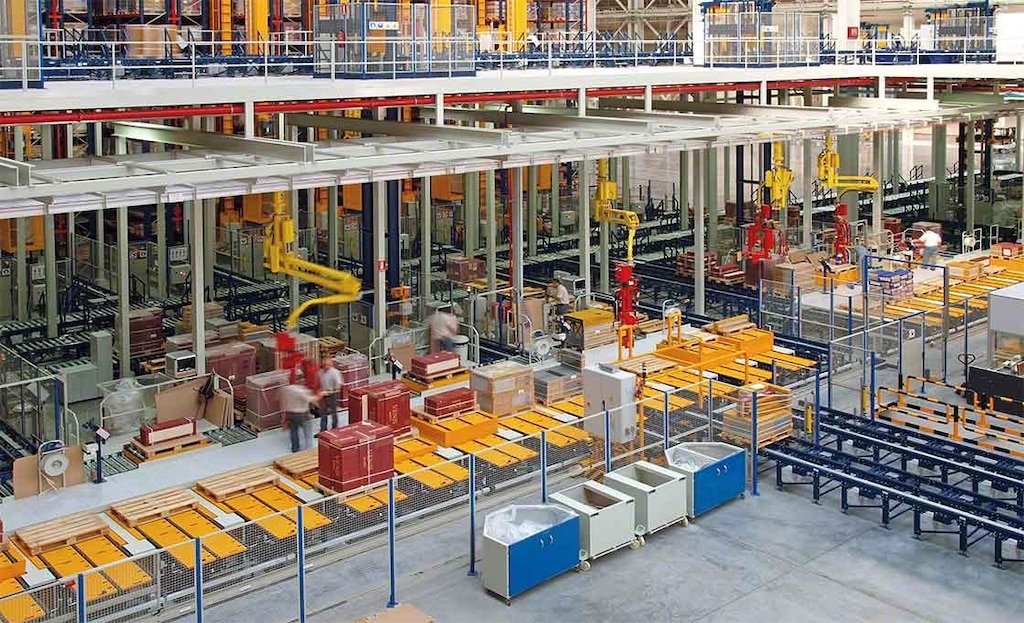
Which warehouse processes can be automated?
Automating the different warehouse processes is one of the most effective strategies to meet the three-pronged target of reducing operational costs, improving service quality and increasing the overall efficiency of your warehouse installation. In the day-to-day labor of a warehouse, we can clearly differentiate between two automated processes: the handling of loads and the automated organization of the tasks to be completed. Let's look at them in more detail.
Automation of load movement processes
These are the main warehouse processes that can be automated:
- Load movements throughout the warehouse
Various automated systems can be used for this purpose:
- Pallet conveyors and box conveyors: roller or chain conveyors are one of the most commonly used automated systems for connecting different warehouse areas and even separate floors.
- Overhead conveyor systems for light loads: the advantage over conveyors is that they can move light loads at high speeds and allow problem-free transfers with curves. They are integrated with conveyor circuits and shuttle cars.
- Shuttle cars: these systems link different warehouse areas in a straight line quicker than conveyors do. A very illustrative example showing the combination of shuttle cars and electrified monorails is in the warehouse of Cerámika Paradyż in Poland.
- Removal of goods from the racks
The most outstanding are the AS/RS stacker cranes for pallets and the miniload system: these systems move through the racks and collect the loads specified by the WMS.
The different models of stacker cranes diverge in characteristics, such as:
- The speed they can reach.
- The load weight they withstand.
- The depth they reach on the racks, which will depend on the type and length of telescopic forks they comprise.
- The positions they can reach. For example, the trilateral stacker cranes encompass three: one front and two lateral.
Within this section, we should also mention the automatic Pallet Shuttle. Both semi-automatic and fully automated versions move pallets from the back of the racks to the front end. Therefore, it is the most widely used combination with compact storage systems.
- Loading and unloading trucks.
This warehouse process also uses conveyors and platforms built into the loading bays. They are capable of loading and unloading entire trucks full of pallets in a single maneuver.
- Pallet checkpoints for quality control
Pallet checkpoints are installed in the conveyor circuits and are usually located in the goods receiving area. In addition to the warehouse management software, they are responsible for identifying, weighing, measuring and checking the pallet's condition automatically.
- Order conditioning
As we already discussed in our article on picking and order preparation automation, there are ancillary machines capable of labeling, wrapping and baling pallets. Also, if order preparation is carried out manually, pneumatic arms can be fitted to help operators handle loads effortlessly, as the Spanish company Porcelanosa did in its automated warehouse designed by Mecalux.

Automating the warehouse process organization
It is achieved through integrating a good warehouse management system, which is essential for:
- A suitable distribution of tasks in the work team
The Easy WMS software includes this task within its functionalities and also goes a step further thanks to the additional Labor Management System module. This continuously measures employee performance, detecting inefficiencies and areas for improvement.
- Assistance in picking and order preparation tasks
The WMS organizes the picking routes according to the order lines and their storage locations. This automatic organization translates into increased speed, accuracy and safety in order processing.
- Optimization of product locations assignments
Easy WMS is capable of managing locations by deciding where to put each load automatically. This involves greater use of storage space and enables the application of criteria for chaotic warehousing.
- Control over the identification and traceability of goods
The WMS centralizes all information about the goods and their movements within the warehouse. Easy WMS makes it possible to safeguard traceability of warehouse processes and other parts or people in the supply chain with incident notification systems and real-time metrics.
Here are the main warehouse processes that can be automated. However, if you need more information about the different systems or the possibilities offered by the specialized software, do not hesitate tocontact us: we will always find the best solutions adapted to your needs.
